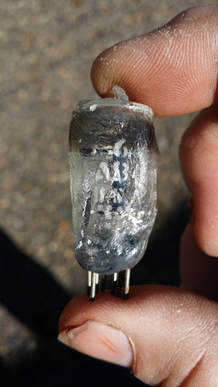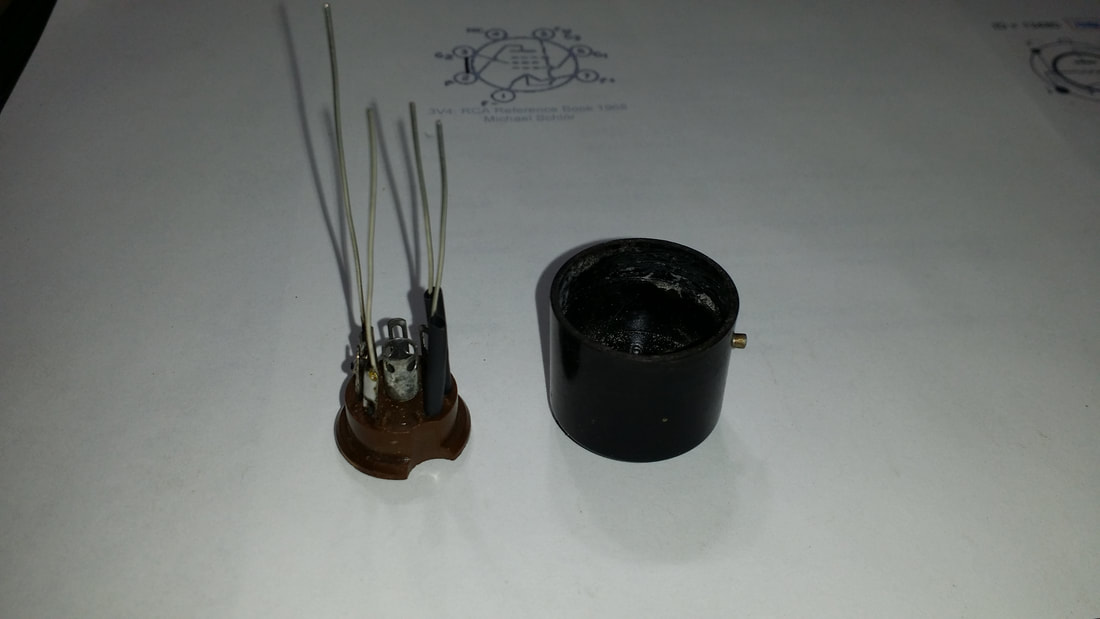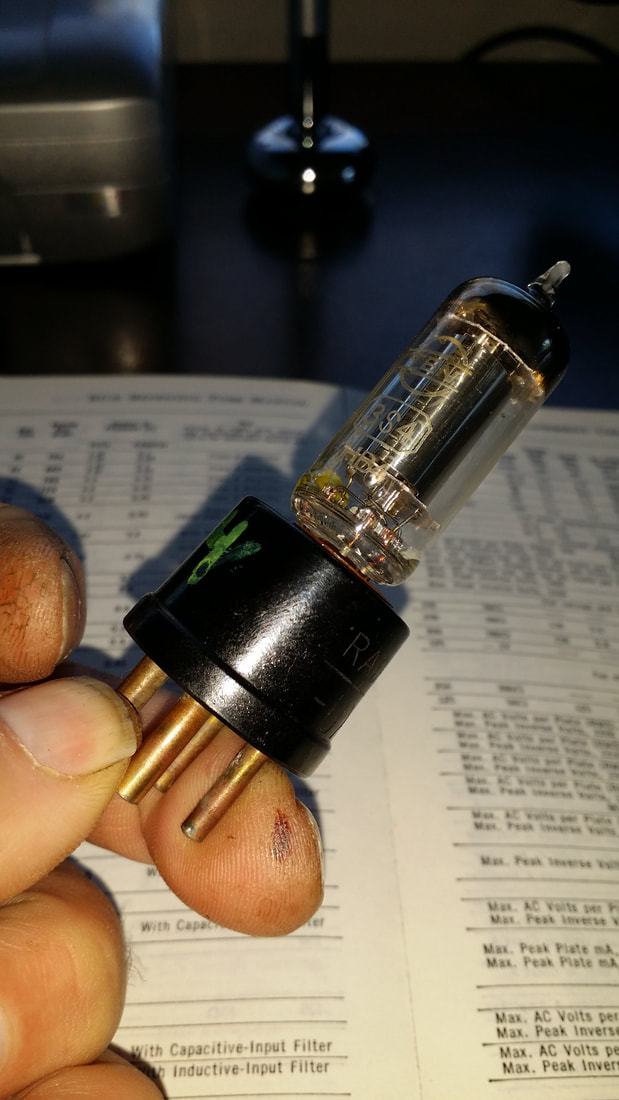There is plenty of history on the 201 online so some research should be done, if you are interested.
I have more than enough UX201s to last a long time, especially considering that the plastic base, long pin tube was really only original equipment for about a year with the previous versions running back to about 1920. And since I try to put the original brand/type of tube in my restorations - well, that is why I have plenty.
But, many people only care about the radio working - and being cheap (me too).
I have thought about this for a while and it is a sure thing that I am not the first. Here is how it goes - build a replacement for the UX201/01A for less than $2.50.
You are gonna' need a 4 pin base like off of an 80. Depending on your radio, this base may or may not need to have the side pin for the Bayonet/UV base - depends on how old your radio is. Then, a standard 7-pin miniature socket. These should both be available from your junk drawer.
Then look in your tube stash for a 6C4. I picked this tube for it's characteristics - basically it is 1/2 of a 12AU7. It is called a power triode by RCA. If you don't have one, E-Pay has some for about $1, some NOS. I just bought 15, about half of them NOS for an average of $1.10 - Sorry, there will be more.
Then 4 wires and a jumper will connect the 2 sockets/plugs. Connect the 7 pin socket, pins 3 and 4 to the big pins, pin 6 goes to the small pin on the right (Pins up, big pins closest to you) and the plate to the remaining small pin. Then place a jumper between pin 3 (fil) and pin 7 on the 7 pin socket. This is the cathode connection.
To test as a 201 use the same settings as an 01A but you will need to lower the bias from about 48 to near 0.
In testing this tube works great as an audio amp including a 112 . I tested it in my AK 20 in all positions with setting as they were for the 201s and it worked great as a detector and audio amp improving tone and level some and about the same as the 201 in the RF amp sockets.
BUT, BUT it is a 6V tube. Yeah, it doesn't matter. It takes about 10 seconds to warm up. BUT, BUT, BUT the cathode will be damaged - well if it goes to "sleep", just run it at 6V in your tube tester for a while. In reality these tubes were often run at low filament voltages to keep noise down in audio circuits and as a way to get bias for finals - look up some of the Fisher amps using the 12AU7 and 12AX7. It will be fine.
Also it only draws .15A of filament current. This will make your power supply/battery happy.
This is both good and bad. The higher gain gets you higher volume, but may introduce some tuning issues. See the Wurlitzer C-3 demo below.
I say temperamental since it seams that a UV or UX-199 can go to sleep just setting in it's box. Sure they can be rejuvenated, at the risk of destroying them. During the restoration process it sure would be nice to have a sub that doesn't cost $50 and up (metal base UV), then put in the correct tubes for display.
Again, looking in the inventory under cheap and plentiful I find the 3V4 miniature 7 pin tube. I have 12 of them. This tube is a pentode but don't let that bother you. The filament is a center tapped common cathode with the tap already jumpered to the suppressor grid. So one more jumper between the plate and screen and you have a triode.
https://www.radiomuseum.org/tubes/tube_3v4.html
The filament is 2.8V but running it at 3V should be no problem. The current draw is .05A. This is just perfect to replace both the UV and UX 199. COST?? - About $5 on Pay-Bay.
THE PIN OUT ON A UV199 IS NOT THE SAME AS A UX199!!!!
Anybody trying to test one without knowing this will be fine until they hook up a UV199 and push the "TEST" button - and - BOOM goes the filament, since you just put plate voltage on it.
Examine the pin-out, courtesy of RM:
https://www.radiomuseum.org/tubes/tube_3v4.html
All 3 of the UV tubes are swapped out for the 3V4 sub with a Gm of 1500 - 2000. The radio works well with more volume and sensitivity. The demo continues with a station at the high end of the dial ~ 1300 kHz.
Later, on a station at 620khz there are more issues with oscillation. The higher gain of the sub tubes is causing both better sensitivity and oscillation. Decreasing the coupling (moving the coil) reduces the osc. squeal, but the tuning becomes critical. The coupling adjustment is not fine enough to make tuning this part of the band practical. The radio could be modified to eliminate this issue, but that is not something I would want to do.
So there may be issues relating to the higher gain of the substitute tubes. These problems will increase with the number of sub. tubes employed. To this I should add that radios using a single or two tubes perform very well. I could not demo one of these for you since they don't produce enough audio to drive my RCA 103 speaker. Additionaly, it is safe to predict that 4 and 5 tube radios would need some modification to prevent the excessive gain from causing increasing problems with operation.
Keeping in mind that the objective was to produce a substitute tube for restoration/testing so as not to risk expensive UV type tubes, I think that this is a success.
OK, OK, just one more - for now.
How about the UX-120. This is the "power" triode output on many radios that use the 199s. The adaptor above is going to work in that socket but the B+ needs to be kept to 90V. How about using a 3S4 instead? It has about the same configuration s the 3V4 but a different pin-out.
I need to do more testing on the UX199 and UX120 subs. I will post further as results become available
If you find these posts useful, don't forget to check the "like" below. Thanks
Russ







 RSS Feed
RSS Feed